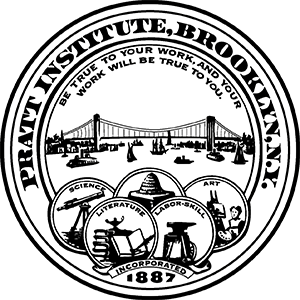College Essay: Max Fink to Attend Pratt Institute

May 19, 2023
If there is one thing you need to know about me, it’s that I have an uncanny instinct to utilize the nearest implement to complete the task at hand. This may sound complicated and technical, but what I’m talking about is so innate, it’s primal.
After pouring the cream into my coffee this morning, it needed to be stirred. I needed a spoon. There were none on the table. Instinctively, my brain went into “primate mode”. “Coffee need stirring. No spoon. Need long, skinny thing.” Before my brain had even registered what my hand was doing, I had picked up my pencil from the table and was just about to use it to stir the coffee when my mom handed me a spoon and lamented “I knew you were going to do that.”
Her simple, exasperated statement got me thinking about this quirky habit of mine. “Why do I pick up the closest, rudimentary tool, rather than search for the most specific, modern tool for the task?” Upon a very brief reflection, I knew EXACTLY why. During grade school, I was captivated by the behavior of primates, specifically chimpanzees and gorillas. I remember being mesmerized by a video of a chimp fishing for termites with a long, skinny piece of grass. In the video, the chimp calmly sits on a termite mound, glances around, picks up the piece of grass, sticks it in the termite mound, and gingerly licks off the termites once he extracts the stick. The chimp hypnotically repeats the process over and over again.
It was only after the “pencil stirring incident” that I realized the profound impact this video has had on me. The chimp’s nonchalant resourcefulness taught me that necessity is the mother of invention, and I’ve unknowingly been applying that principle to everything I do. Stack of pallets = makeshift ladder. Neighbors’ mulberry tree = afterschool snack. Need a belt? Grab a shoelace. Forgot a fork? Voila! Two small sticks = Chopsticks!
This principle of resourcefulness is an integral aspect of my approach to design. When I am painting in an industrial area and need a straight edge, I instinctively look to the ground for a broken shard of glass. When inspiration strikes and I need a small-scale surface to paint, objects from the neighbor’s trash or a salvaged, rusty sign will always prevail over a store-bought canvas. I’m grateful for the ability to enhance my creative pursuits by tapping into the primal parts of my brain. I feel a strong sense of accomplishment when I’ve transformed a disregarded object into something purposeful or visually appealing.
Resourcefulness brings innovation and creativity to mundane aspects of my life. Just like the termite-fishing chimp, I prioritize simple resourcefulness over complex effort. In an age of lightning speed technological advancements, this human primate still values our ancestral ability to make very crude tools to accomplish modern day tasks. If only I could “fish for termites” with my primate kin!
Pratt Institute Supplemental Essay
I first laid eyes upon Saul Steinberg’s Mural of Cincinnati in June of 2022 at the Cincinnati Art Museum. Located directly in front of the main entrance, the Mural of Cincinnati’s stylistic brilliance has captivated my attention for hours on end. The composition of the mural resembles that of a sketch pad, with 8 unique rectangles of off-white canvas, discolored by years of exposure to cigarette smoke. Cincinnati landmarks are placed randomly within each panel and composed almost entirely of hard, black lines, accompanied by abstract caricature and fantasy architecture illustrating the gaiety of city life. Slight touches of watercolor are also incorporated; however, it was Steinberg’s intention to not distract viewers from his precise linework and unique art style with excessive loud colors.
Steinberg’s reliance on clean lines, sharp serifs, and intentional negative space has shown me that a surface does not have to be completely engulfed in colors and designs to be a quality piece- originality and precision is key. Since adopting the “Steinbergian mentality” when I paint, I have found myself much happier with the outcome. My works are much more representative of my own style, and I am constantly surprising myself with how far a limited color pallet can be stretched when used correctly and sparingly. Steinberg’s use of negative space has given me an appreciation for using negative space as a design element in my large-scale pieces. It allows for each element of the mural to have its own prominence, despite being part of such a large, detailed work, and drags the viewer’s eye to different areas of focus. Additionally, Steinberg’s use of “curly cue” serifs to simply add a sense of playfulness, movement, and whimsy to the piece is an element I have begun to incorporate in my own works.
The passage embossed onto the adjacent wall illustrates the life of the mural, and the level of care museum workers took to restore it. In 1948, Cincinnati businessman John J. Emery commissioned Steinberg to create a mural for the interior of the Skyline Restaurant, located within Emery’s groundbreaking buisness venture: the Terrace Plaza hotel. After years of decline, the Terrace Plaza Hotel closed in 2008, leaving the mural to sit in the darkness for 9 years until the building was listed on the National Register of historic places in 2017 and restoration efforts by the Cincinnati Art Museum could commence.
The story of this mural has given me a new appreciation for the future of my large-scale projects. As I continue to paint murals both inside and out, I fantasize about what their future holds. The Mural of Cincinnati was left to rot for 9 years before being rediscovered and refurbished. As much as I would like to keep all my work intact until the end of time, I know that once I pack up my materials and go home their fates are completely out of my control.


